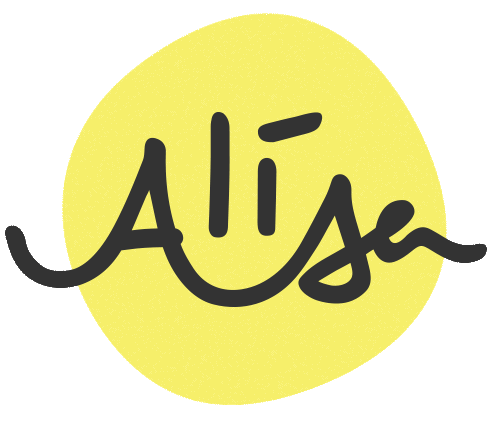Building an Online Presence
It’s so hard to put yourself out there, but the internet is an amazing resource that can connect you to people that want to know what you offer, what you’re up to, or how they can learn from you. As someone offering a creative service, I have to have a way to show people what I can do and that they can trust me. The following is a brief summary of my process for the Alisa Olinova Creative website.
First I asked my self some important questions.
Who is my audience, what is the purpose of my site?
I needed to get a “portfolio site” up fast. One, to share my work with agencies and designers looking for freelance assistance. Two, help individuals and businesses looking for graphic design work be able to find a freelancer in Los Angeles and get a birds-eye view of my services.
Do I have to rebrand?
Since my goal was to get up an running and build trust with clients looking to work with me, I decided to update my personal identity and focus on representing myself as a freelancer. This was a good opportunity to rebrand, but not dive too deep.
Onward! Then I researched other sites.
Observations on the design and content of other similar(aspirational) sites.
They have good copy writing that showcases their personality. They have eye catching high-quality mockups, using full screen images when possible. The typography is sexy. They use intentional, controlled color, careful not to clash with project examples. They have a clear breakdown of services and what each service entails. Cover images usually have text to tell you what will be shown in that project. Illustration services are blended seamlessly into the site, but highlighted in design projects. Some sites filter out illustration as a specific offering. They have an option to filter between types of work if there’s a lot showcased. Many have included a shopping experience—books, pins, posters, etc. Many have created a separate “logo showcase”. Many have a blog, space for events, press, and newsletter sign up. Some have testimonials and quotes from their team or clients.
This inspired me to collect ideas for marketing goals/activities I can work on over time.
A monthly blog post/newsletter/Medium/LinkedIn
Monthly updates to Behance portfolio
Updates with personal/passion projects
Weekly Dribbble posts
Daily-ish Instagram posts (cross post to Facebook and Twitter)
It’s important for me to create goals, but prioritize and move on with one thing at a time. Not putting too much pressure on myself by setting unreachable expectations. I’ll collect my ideas along the way so I can come back to them in my down-time.
I picked a host.
I narrowed the options down to two hosting services.
Adobe Portfolio: Pros are that it’s free for Adobe Creative Cloud users, comes with the Adobe “community”, has nice animations. Cons are that I don’t think I can add a shop, feels restrictive in design, has few templates.
Squarespace: Pros are that it has more customization, can add a shop, reflects the type of work I could do for a client. Cons are that it has added costs. My favorite templates were York, Jasper, Flatiron, and Henson. A comparison of features told me that York is the most flexible.
I already had a domain through iwantmyname.
Time to create!
I created a rough website outline (aka sitemap, aka information architecture).
Home: Intro statement, Select Projects, Services
Design: Project Showcase
Context/Need, Concept Overview, Reflection Statement, Credits/Scope
Illustration: Image Showcase
About: Bio, Values, Testimonials, [LATER] Events/Press/Blog
[LATER] Shop
Contact
I created categories based on what projects I wanted to showcase.
Brand/Identity
Illustration
UX/UI/Web
Print/Layout
Infographics
To keep myself on track, I created a list of projects that I would create “now”, “later”, and “maybe”. I didn’t need to have all my projects up in order to launch my website and I made sure to start with the projects that best showcased my range of services as well as the types of clients I have worked with (and would like to work with).
Design tips and lessons learned.
I kept all my content written in a separate file. There is nothing worse than having to redo your work because the internet crashed.
I created images and content in a consistent way so that I could re-purpose them later across presentations, etc.
I added gifs and videos to create more visual interest.
I used consistent font styles and sizes to make reading and navigation easier.
I added SEO descriptions and tags to everything I possibly could to help people find me when their searching.
I set up the structure of the site and then added projects to it as I completed their content. Feels good to mark stuff done!
I wrote all my content with a specific voice and style in mind. I edited everything at least once, probably 2-3 times (but you have to move on at some point).
I shared the design with a few people that would be able to give me logical feedback.
I posted the site and shared it with the world even though I wasn’t sure if it was done or if I wanted to change everything about it (the Designer’s Syndrome).

